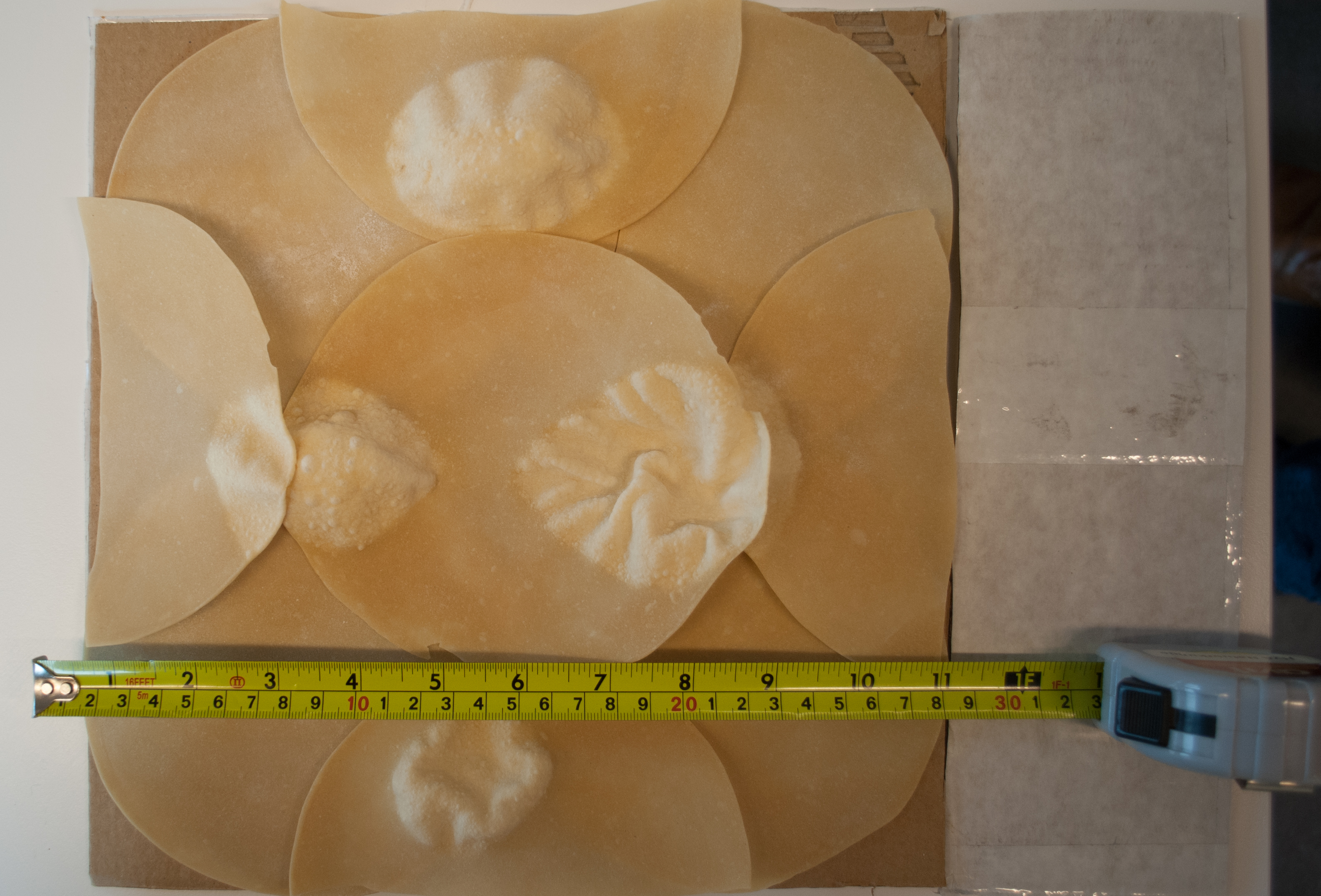15.15. Hot spots in the microwave#
| Author: | Wouter Spaan |
| Time: | 5 minutes |
| Age group: | Grades 10-12 |
| Concepts: | Standing waves, nodes, antinodes, microwaves, electromagnetic radiation |
Introduction#
Why is there a turntable in a microwave? This seemingly simple question hides interesting physics. The dimensions of the microwave are chosen so that standing waves of microwave radiation occur. In the nodes, the food is not heated, and in the antinodes, the heating is maximal. To achieve somewhat even heating, the food must rotate.

Fig. 15.39 Hotspots shown with Papadums in the microwave. The type plate is enlarged.#
You can easily make the locations of the antinodes of the standing wave visible. With some microwaves, it is also possible to determine the speed of light. This demonstration shows that standing waves are not limited to sound waves or strings. Electromagnetic waves can also produce standing waves.
Equipment#
(Old) microwave
Unbaked papadums (available at well-stocked supermarkets)
Preparation#
Remove the turntable from the microwave.
Make a fitting plate out of cardboard.
Place the unbaked papadums on the cardboard plate.
Procedure#
Place the plate with papadums in the microwave and turn it on briefly. You will notice that the papadums become warm in certain spots. These spots are clearly visible because they ‘bake’ there. These are the hotspots of the microwave. In other places, the papadums will remain cold. The places where the papadums become warm are the antinodes of the standing wave in the microwave.
In principle, it should be possible to determine the speed of light with this method: the distance between two antinodes is equal to half the wavelength, and the used frequency is listed on the type plate (usually 2450 MHz). In this case we would obtain:
which clearly needs some more work to arrive at an acceptable value…

Fig. 15.40 Top view of the result with a measuring tape as a reference for scale.#
Physics Background#
Standing electromagnetic waves are created in the microwave. In the antinodes of these waves, the food is heated. The distance between two antinodes is \(\frac{1}{2} \lambda\). You can measure this distance and combine it with the specified frequency of the microwave radiation to estimate the speed of light.
Tip
There are other ways to determine the hotspots circulating on the internet, for example, with bread dough (which changes color in the hotspots) or chocolate (which melts in the hotspots).
Follow-up#
Different microwaves have different hotspot patterns. Could there be a correlation between the quality of the microwave and the distribution of the hotspots?
Is the rotation of the turntable effective for every hotspot distribution? How does this work, for example, with the pattern in the photo?
